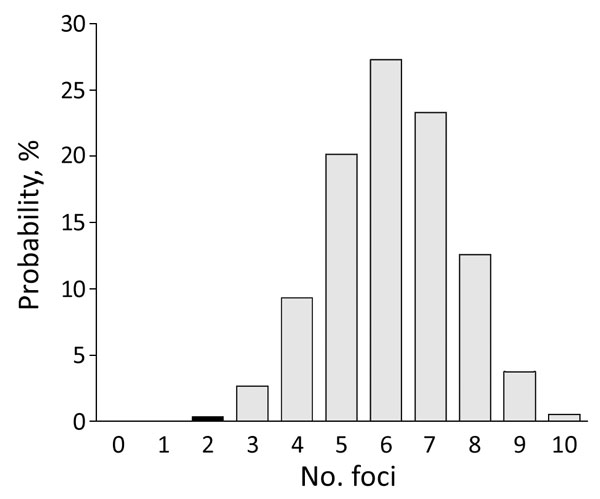Volume 25, Number 2—February 2019
Dispatch
Tick-Borne Encephalitis Virus Antibodies in Roe Deer, the Netherlands
Figure 2

Figure 2. Probability distribution of number of potential foci containing tick-borne encephalitis virus expected to be detected during 2017 if only 297 of 590 roe deer samples had been submitted for testing, the Netherlands. Black column indicates the probability corresponding to the number of foci detected during the retrospective study of 297 samples obtained during 2010.
Page created: January 18, 2019
Page updated: January 18, 2019
Page reviewed: January 18, 2019
The conclusions, findings, and opinions expressed by authors contributing to this journal do not necessarily reflect the official position of the U.S. Department of Health and Human Services, the Public Health Service, the Centers for Disease Control and Prevention, or the authors' affiliated institutions. Use of trade names is for identification only and does not imply endorsement by any of the groups named above.